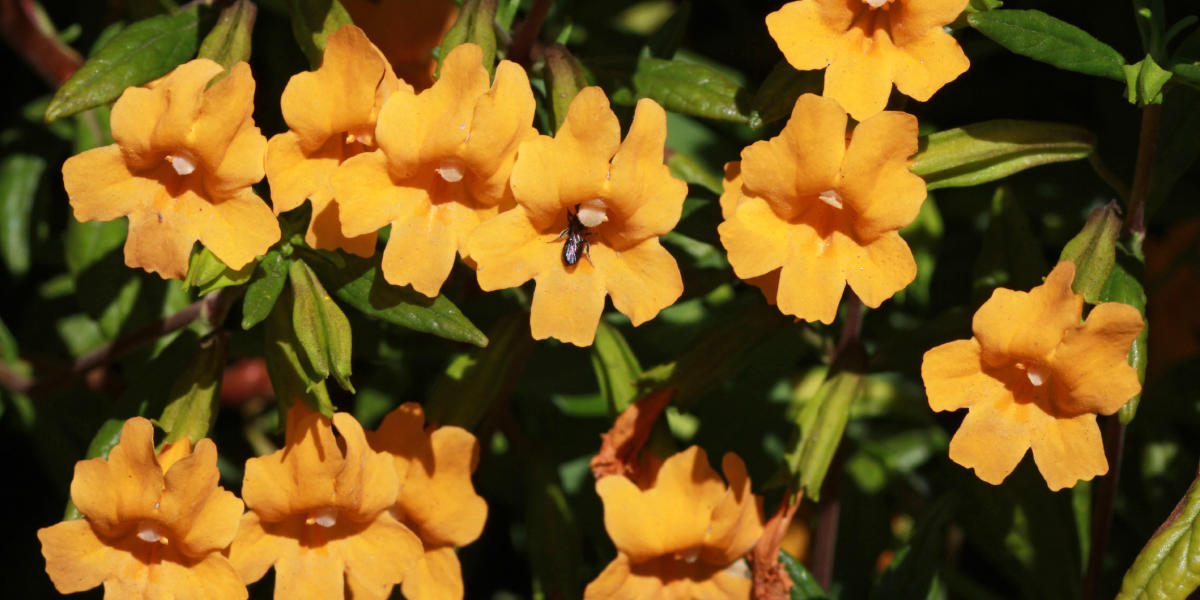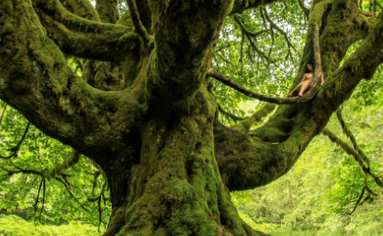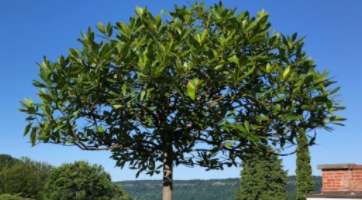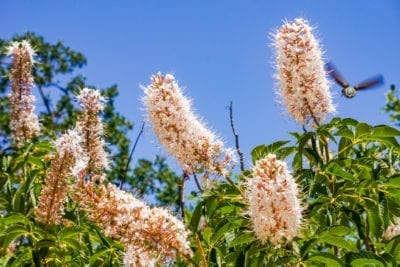"Walking along a dirt path on a hike you’ll probably see some pretty trees or flowers that you don’t RECOGNIZE. This guide will help you if you find one of these so you don’t have to pick it and risk taking the beauty away for someone else to enjoy"--ynez Foxe-Robertson, 7th grade
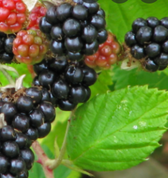
First is the California blackberry. It's certainly an iconic berry, with its thorny stems and juicy blackberries. I’m sure as a kid everyone has seen a bramble of the delicious berries and taken a few for a long hike or possibly just for fun. Something surprising that people usually don’t know about blackberries is that they are actually a part of the rose family. They have an almost identical twin, the Himalayan blackberry. There is a small difference with the leaves. Californian blackberries have a more heart-shaped leaf. The California blackberries also closely mimic poison oak. In the seasons blackberries usually don’t grow, which is winter, summer, spring, and late fall. Without the berries, the plant looks a lot like poison oak. But be careful, it can also work in reverse. You can think that poison oak is a black berry because of the heart-like leaves and reddish hue. If you end up picking poison oak instead of the yummy brambles that make marvelous jam, use mug-wort which usually grows around poison oak. It also has three tines on the leaves, but has a white color on the bottom and a more pale green.
The next is a big maple leaf. Big leaf maples are large graceful trees that can grow to 100 feet, but on average grow to 35-75 feet. They have large three-tined leaves and wispy silver branches. Big leaf maples need well draining soil to grow and a lot of water for such a big tree. Oakland may not seem like a good place for them to grow, but since the snow in the mountains melt and seep through the soil to reach the big leaf willows, it's actually a good place for them to live. They have wide branches oftenly covered in moss. If you love climbing trees, these trees are good for that, since their branches are relatively low to the ground and there are a lot of places to grab hold. There are beautiful large trees with mossy branches and large leaves that have a bright green shiny look to them.
The third is bay laurel. Bay laurels are 40-80 foot tall trees that are pretty common on hikes in Oakland. They have a natural oil in their leaves that gives them a strong cleansing earthy smell. Rub the leaves in your hands and either smell your hands or the crushed leaf to make the oil come out. Bay laurels need well-draining soil and can only live in these conditions. They need thick damp soil that has lots of little pockets for the water to drain into. They have long banana-shaped leaves that turn into bright colors of yellow, orange or red when they fall to the ground. On the tree they are a green color. There is an origin story for the bay laurel, of a bird with a crystal plumage. The sun gets mad at the bird because it tricked it into making it light all the time, so the bird's plumage could always shine. The bird with the crystal plumage’s feet got planted to the ground, so even if it reached and reached for the sun its whole life it could never move. So the bird couldn't grow its plumes , and instead it got long green leaves—but the sun made an exception. It said, you can have your fancy colors, but only when the leaves hit the ground. And that was the origin of the bay laurel.
Our next tree is the California buckeye. Buckeyes are beautiful, squat little trees. They have silvery wispy branches with thick bulb-looking things hanging from the trees. The California buckeyes have an estimated life span of 250 years to 300. They are pretty small and on average are only about 10-20 feet tall, but they are beautiful nonetheless. They look like trees straight from a story book. They have bulbs that grow on the trees that fall and sprout other buckeyes in the ground.
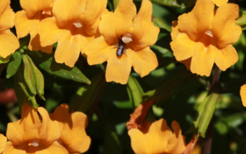
The last is sticky monkey flower. The monkey flower has a lot of different kinds. But the sticky monkey flower is the most interesting, and one of the most common found on the hikes of Oakland. It has soft orange flowers that are funny looking--like a monkey's face. It also has sticky green leaves that cling to your clothes as you walk by. Sticky monkey flowers aren’t particular about where they want to be. They grow almost anywhere and don’t need much maintenance. They grow in small little bushes that range to 3-4 feet.
All of these flowers and trees are native to Oakland and have a beautiful look to them. They have interesting qualities and pretty cool facts to know. Some extra things to know is that blackberries tend to grow by the water, they need lots of water to grow and that's why it’s so hard to grow them in a black yard. They also take over a lot of space. Another thing is that California buckeyes are actually poisonous to livestock. They are named because they have large bulbs like a buck's eye. One more fact is that bay laurels are actually named after a Greek princess. All these trees and plants are very special to Oakland even though they may not be rare, it’s good to recognize the things you see a lot.
All of these flowers and trees are native to Oakland and have a beautiful look to them. They have interesting qualities and pretty cool facts to know. Some extra things to know is that blackberries tend to grow by the water, they need lots of water to grow and that's why it’s so hard to grow them in a black yard. They also take over a lot of space. Another thing is that California buckeyes are actually poisonous to livestock. They are named because they have large bulbs like a buck's eye. One more fact is that bay laurels are actually named after a Greek princess. All these trees and plants are very special to Oakland even though they may not be rare, it’s good to recognize the things you see a lot.
